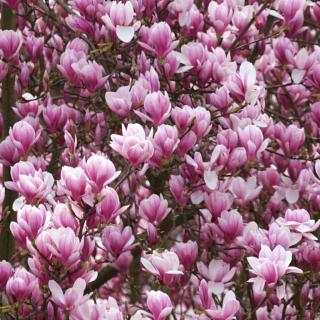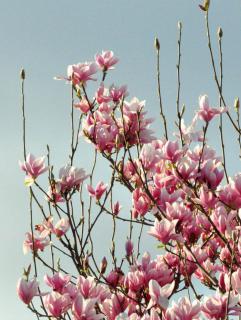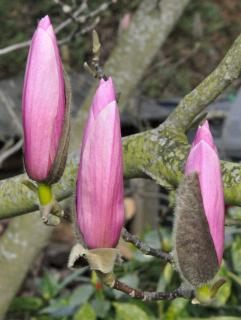

Magnolia is are among the most beautiful spring-blooming trees.
Main Magnolia facts
Name – Magnolia soulangeana
Family – Magnoliaceae
Type – tree
Height – 16 to 50 feet (5 to 15 meters)
Exposure – full sun, part sun
Soil – rich and cool
Foliage – deciduous – Flowering – spring
Whether deciduous or evergreen, they are covered with spectacular flowers at the end of winter.
It is recommended to plant magnolia at the beginning of fall. This allows for root development before winter and ensures correct settling in for spring.
For evergreen species, you may plant in spring without expecting any problems.
Evergreen magnolias can reach heights of 65 feet (20 meters). They’re quite tall and must thus be planted at a certain distance from houses and buildings.
Deciduous magnolias are smaller, around 16 to 20 feet (5 to 6 m) tall, to the point that it’s possible to plant them along walls to follow a lattice.
 too wet in winter.
too wet in winter.It’s possible to prepare cuttings in summer or layering in spring.
Magnolias require little care and even resists diseases very well. Take note of these little bits of advice to help you get better blooms:
Whether deciduous (M. soulangeana) or evergreen (M. grandiflora), magnolias are trees that require very little care when correctly settled in. They will decorate your garden for many long years.
Parasites rarely attack magnolias. Even though, occasionally, you might find a few aphids. Rarer still are possible red spider mites in summer.

It is possible to prune main branches in winter to balance the silhouette.
Take note that what is most distinctive about magnolias is their natural shape.

It stands out for its magnificent and generous blooming that comes in hues of pure white to pinkish white to pink.
Magnolia trees are very common, but there are also shrub varieties that are ideal for small gardens.
Note that there are two major types of magnolias:
– Deciduous magnolia, also called saucer magnolia or Magnolia soulangeana. They bloom at the beginning of spring, before leaves appear.
– Evergreen magnolia, also called Southern magnolia or Magnolia grandiflora. Flowers appear in summer, offering great tulip-shaped blooms that span 8 to 10 inches (20 to 25 cm) across.
Maritime pine bark mulch will give these trees their needed acidic soil levels to develop well. It’ll also help retain moisture.
For more effectiveness, layer on mulch in the summer every year, adding a fresh 1 ½ to 2 inch layer.